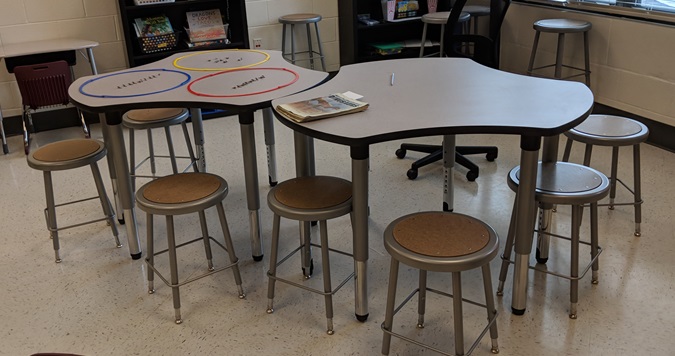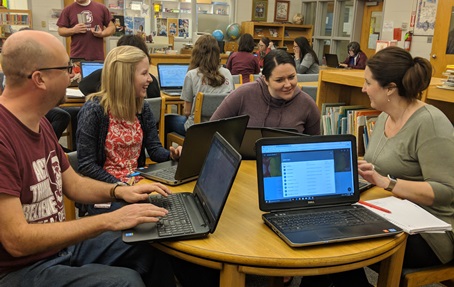If you are a general curriculum special education teacher who serves a majority of your students in the general setting, you can expect to spend your day teaching in different classrooms, in varying capacities, with multiple different teachers, and with students with a wide range of abilities and needs. This constant change of rolls makes being a special education teacher exciting, challenging, exhausting at times, and rewarding. Ashley Claxton, an elementary school special education teacher at Swain East Elementary School shares with us the many varieties that inclusion services have to offer.
 Ashely teaches 3 inclusive and 3 resource classes per day, ranging from grades 3-5, and in the areas of reading, math, and social studies. Her roles in these classes all differ, as the needs of her classes vary. One class, she may provide whole group support and instruction, while the next class she teaches 3 small groups, each with a different and targeted lesson. Her next class she may be seen facilitating 2-3 different groups as they rotate stations and work on different activities. When asked, which teaching model for inclusion she enjoys the most, Ashley shared “all models of co-teaching have their pros and cons”, however she really enjoys working with students in learning stations within the general classroom.
Ashely teaches 3 inclusive and 3 resource classes per day, ranging from grades 3-5, and in the areas of reading, math, and social studies. Her roles in these classes all differ, as the needs of her classes vary. One class, she may provide whole group support and instruction, while the next class she teaches 3 small groups, each with a different and targeted lesson. Her next class she may be seen facilitating 2-3 different groups as they rotate stations and work on different activities. When asked, which teaching model for inclusion she enjoys the most, Ashley shared “all models of co-teaching have their pros and cons”, however she really enjoys working with students in learning stations within the general classroom.
How does a teacher plan for a day of instruction that has so much different content, arrangements and individual student needs? Ashely shares that this is one of the biggest challenges (planning) associated with being an inclusion special education teacher. Swain East Elementary has weekly “data time” where all teachers come together to review and discuss recent data. Ashely says that she uses this time to talk with her regular education co-teachers about grouping and re-arranging groups within their classes to target instruction based on needs.
 (3rd grade class presenting projects)
(3rd grade class presenting projects)
Ashley believes that inclusive environments are at its strongest when there is mutual respect and community between co-teachers and with students. This happens when both regular education and special education teachers value each other and want to learn from each other, as both teachers have a lot to offer and contribute. So much can be accomplished in an inclusion environment when co-teachers have shared responsibilities. Students start to see both teachers as equals and valuable towards their learning and growth.
What ever variety inclusion environments may bring you, strong co-teacher relationships, mutual ownership of a classroom, and structured and meaningful planning will help strengthen teaching and learning for all students.


(classroom set up for small group, station activities)

